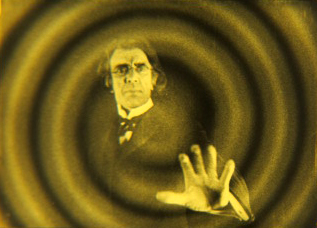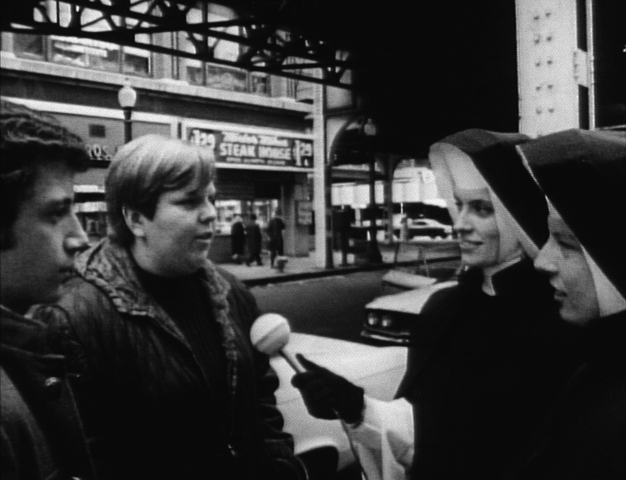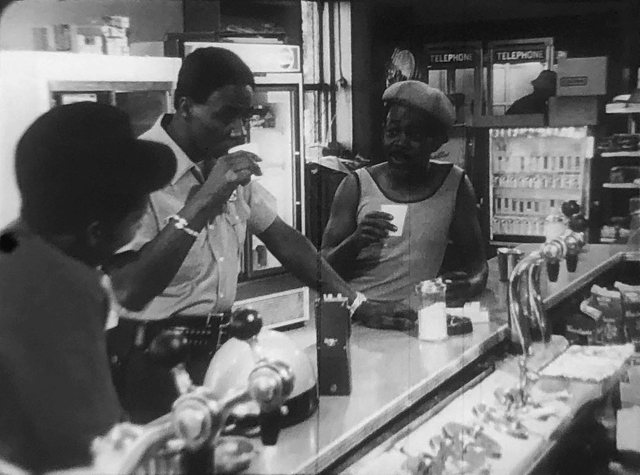- Films Preserved Through the NFPF
- 2014 Federal Grant Winners
- 2015 Federal Grant Winners
- 2016 Federal Grant Winners
- 2017 Federal Grant Winners
- 2018 Federal Grant Winners
- 2019 Federal Grant Winners
- 2020 Federal Grant Winners
- 2021 Federal Grant Winners
- 2022 Federal Grant Winners
- 2023 Federal Grant Winners
- 2024 Federal Grant Winners
- 2025 Federal Grant Winners
2018 Federal Grant Winners
-
5 on 105 (1974), promotional short for Polaroid’s 105 film, featuring Walker Evans and four other photographers (George Eastman Museum). Won by a Sweet (1929), a sponsored film from the National Confectioners’ Association, will be preserved by Washington University in St. Louis with support from the NFPF.
Won by a Sweet (1929), a sponsored film from the National Confectioners’ Association, will be preserved by Washington University in St. Louis with support from the NFPF. - The Big Lever: Party Politics in Leslie County, Kentucky (1982), documentary on rural straight-party-ticket voting, inspired by Richard Nixon’s visit to Leslie County (Appalshop).
- Capitulation (1969), abstract exploration of Chicago’s urban spaces by Robert Stiegler (Chicago Film Archives).
- Charles Longstreet Weltner Collection (1950s–60s), campaign films from the pro–Civil Rights Georgia Congressman, including an appearance by Ted Kennedy (Atlanta History Center).
- Construction of the Airships U.S.S. Akron and U.S.S. Macon (1929–33), footage of the largest airships of their time, produced by the Goodyear Tire & Rubber Company (University of Akron).
- Daguerreotype Likenesses (ca. 1949), educational film on 19th-century photographic processes by James Card (George Eastman Museum).
- Daly Family Collection (1919), home movies of leisure activities pursued by the founding family of the Anaconda Copper Mining Company (Montana Historical Society).
- Debt Begins at 20 (1980), experimental documentary about Pittsburgh’s punk rock scene by Stephanie Beroes (Anthology Film Archives).
- Faces of Russia (1968), documentation of Senator Allen J. Ellender’s 1968 trip to the Soviet Union and his observations (Nicholls State University).
- Forsake Me Not (1958), documentary about elderly immigrants in Israel transitioning from temporary housing to homes provided by the Jewish Distribution Committee (American Jewish Joint Distribution Committee).
- Frank I. Reed Collection (1928¬–49), home movies depicting the construction of the Eklutna Power Plant in Anchorage and pioneer bush pilot Russ Merrill before his 1929 disappearance (Alaska Moving Image Preservation Association).
- Freight Yard Symphony (1963), modernist animation by visual–effects pioneer Robert Abel (UCLA Film & Television Archive).
- The Golden Bowl, or, Repression (1984–88), Chris Kraus’s deconstruction of the Henry James novel (New York University).
- Harry Caldwell Collection (1930s), critical portrait of China’s Fujian province by a Methodist missionary from East Tennessee (Knox County Public Library).
-
Inquiring Nuns (1968), Philip Glass–scored sociological documentary with nuns asking random Chicagoans if they are happy (Kartemquin Films). Gordon Quinn’s Inquiring Nuns (1968) will be preserved by Kartemquin Films with support from the NFPF.
Gordon Quinn’s Inquiring Nuns (1968) will be preserved by Kartemquin Films with support from the NFPF. - Jane’s Declaration of Independence (1915), tale of a young woman who defies her family to marry a soldier, filmed in the Presidio of San Francisco (San Francisco Silent Film Festival).
- Light Sleeping (1975), Stephanie Beroes’s audiovisual love letter to her cat (Anthology Film Archives).
- Luther Cressman Field Work Films (1946–49), documentation of the influential archaeologist's Oregonian excavations in Kawumkam Springs and the John Day Fossil Beds (University of Oregon).
- Men of Science (1938), portrait of the Museum’s scientists, technicians, educators, and artists at work (American Museum of Natural History).
- Murray Goldblatt Collection (1943–45), home movies of wartime Europe by a Jewish American soldier, with scenes of Ingrid Bergman and Jack Benny entertaining troops and footage from the Buchenwald concentration camp (United States Holocaust Memorial Museum).
- Negatives on Paper: Talbot’s Process (ca. 1949), educational film on 19th-century photography by James Card (George Eastman Museum).
- A Place to Start (1972), documentation of conversations on race relations by New Orleans high school students (Amistad Research Center).
- Rainbow Bridge Monument Valley Expedition Collection (1935–52), documentation of the first interdisciplinary expeditions in the Southwest, organized by Ansel Hall in the Four Corners region (Fort Lewis College).
- Recital (1978), feminist structural film by Stephanie Beroes, inspired by Simone De Beauvoir (Anthology Film Archives).
- The Spider and the Fly (1938), one of the earliest surviving American home movies with synchronous sound (Chicago Film Society).
- Sprockets and Splices: A Little Journey to the Source of Film Damage and Poor Presentation (1923), tutorial on proper film projection, produced by Famous Players-Lasky (George Eastman Museum).
-
Street Corner Stories (1977), Warrington Hudlin’s documentary on the dialogue and storytelling of a New Haven corner store’s African American customers (Yale University). Warrington Hudlin’s documentary Street Corner Stories (1977) will be preserved by Yale University with support from the NFPF.
Warrington Hudlin’s documentary Street Corner Stories (1977) will be preserved by Yale University with support from the NFPF. - Super Up (1968), Kenji Kanesaka’s experimental social justice narrative about an African American Chicagoan (Chicago Film Archives).
- Terrorists in Love (1983), experimental collage involving nihilists by Chris Kraus (New York University).
- Travel Films of George L.K. Morris (1934), home movies of the abstract painter’s sojourn in the Far East (Frelinghuysen Morris House & Studio).
- Triple Exposure (ca. 1947), Kodachrome advertising film made by James Card, George Eastman Museum’s founding curator of motion pictures (George Eastman Museum).
- Twin Peaks (1977), Al Wong’s experimental documentation of a looping drive around San Francisco’s Twin Peaks Boulevard (Pacific Film Archive).
- Valley Fever (1979), Stephanie Beroes’s meditation on the nature of perception (Anthology Film Archives).
- The Wet Collodion Process (ca. 1949), educational film on 19th-century photography by James Card (George Eastman Museum).
- Won by a Sweet (1929), sponsored film from the National Confectioners’ Association on the health benefits of candy for athletes (Washington University in St. Louis).
